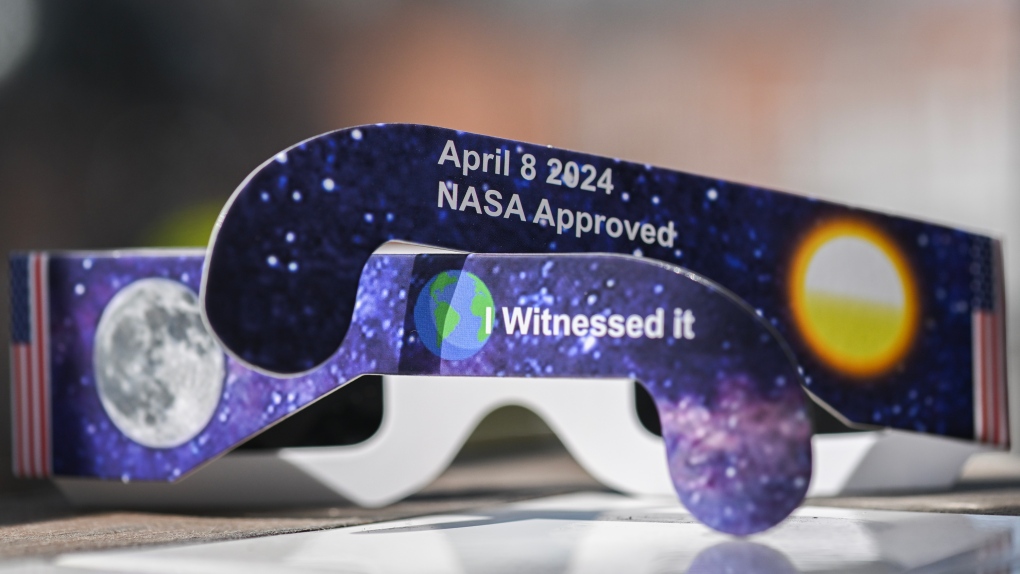A school in Saint-Jerome, Que. was forced to toss out thousands of counterfeit solar eclipse glasses that were purchased on Amazon.
The Riviere-du-Nord school services centre confirmed that the 3,700 glasses that Ecole Polyvalente Sainte-Jerome purchased needed to be thrown out after students and teachers noticed that some glasses did not have the same opacity as others.
“They were not all counterfeit,” said service centre communications officer Nadyne Brochu. “In the batch received, as the school began distributing them to students, teachers noticed that some glasses did not have the same level of opacity. When in doubt, they did some research and found the supplier’s notice explaining that its product had been counterfeited.”
Brochu said the school contacted the Montreal Science Centre and made the decision to toss the glasses out as a safety measure, “to avoid the risks associated with non-compliant glasses.”
“This decision was reinforced by the fact that it was impossible to check every pair of glasses received,” said Brochy.
The American Astronomical Society (AAS) said in March that counterfeit glasses are ones made by one manufacturer with a fraudulent name and artwork printed on them.
“Until recently, the only counterfeit products we knew of were cardboard-frame eclipse glasses made by an unidentified factory in China but printed with “Mfg. by: American Paper Optics” (APO) on them,” the AAS said on its website. “APO is one of the major U.S. manufacturers of safe solar viewers and prints its name and address on its eclipse glasses, whereas the Chinese copycat products have APO’s name but not its address.”
The AAS adds that though they are counterfeit, the glasses appear to be safe.
More counterfeits popped up after that discovery and the AAS said that there is no way to differentiate fakes from the real thing.
AAS Solar eclipse Task Force project manager Rick Fienberg said that solar filters are minimum 1,000 times darker than the darkest regular sunglasses.
He said it is easy to tell if they are not safe.
“Before April 8th, put them on indoors and look around,” he said. “You shouldn’t be able to see anything through them, except perhaps very bright lights, which should appear very faint through the glasses. If you can see anything else, such as household furnishings or pictures on the wall, your glasses aren’t dark enough for solar viewing.”
Further tests include taking the glasses out on a sunny day and looking around. You still should not be able to see anything except the sun’s faint reflection on a shiny surface such as a puddle. Then, look at the sun and you should notice the sharp-edged, round disk that’s “comfortably bright.”
If the glasses pass all three tests, they’re fine, the AAS said.
The St. Jerome school spent $2,394 on the glasses and, due to the short turnaround, will not be able to purchase new ones for the students.







